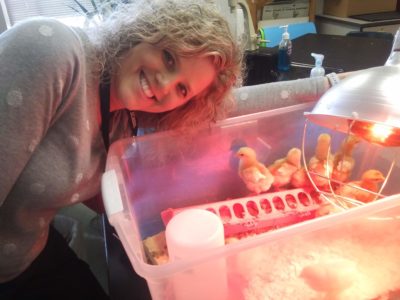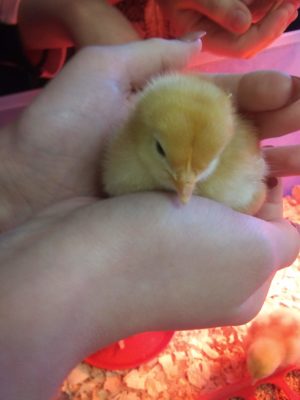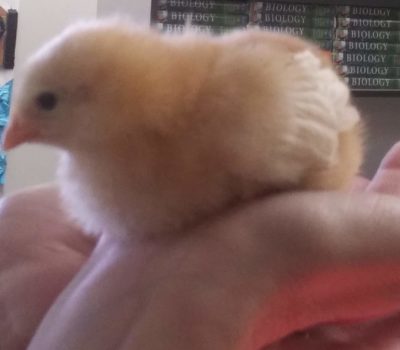
Searcy AR (LP) – Every year at Searcy High School one teacher hatches chickens as a project for her class. When the chickens hatch word spreads and most people come to see the baby chickens. Mrs. McNeill started this project about five years ago when she was a teacher at Searcy High School. The eggs she hatches come from Possum Grape, Arkansas. Possum Grape is a small unincorporated community about 10 miles past Bradford, Arkansas.

The chicks are hatch with an incubator given donated to her by her science classes. Mrs. McNeill said, “After the chickens are hatched after a few days I take them to the farm, also known as my house here in Searcy, Arkansas where they live happily ever after.” To hold a baby chicken just pick up their chubby fluffy bodies very gently and then hold them in your hands. Keep them close to your chest so that way they’re warm and can’t fall. According to Megan Homeier, “Baby birdies are pretty cute! I hope Mrs. McNeill names one Cheese. Or Mama Gouda. Also, I think I’m vegan now?” The eggs that Mrs. McNeill get go into the incubator where they’re kept nice, warm and cozy when they spend about 21 days before hatching. According to Mrs. McNeill, “I have lots of thoughts, but nothing specific about the eggs. Chickens are fun!” The chickens did take longer to hatch this year taking few more than 21 days to hatch.

The eggs in order to hatch have to be fertilized eggs and be placed gently in an incubator and heated to 99.5 degrees fahrenheit for about 18 days in 40 to 50 percent humidity and 65 to 75 percent humidity is needed for the final days before hatching. After they hatch it take about a week under a heat lamp with plenty of food and water. During hatching in the incubator the chicks start the first hole in the shell with their egg teeth, and then complete the rotations that make the holes larger. After that, they push upward until the shells give way. In the first few weeks a chickens will need a lot of food and water because they mainly eat a lot to start growing rapidly. The chickens have gone to Mrs. McNeill’s home but next year a new batch of baby chickens will be born. According to Takoda Johnston, “You put the eggs in the box and you put the heat lamp on.” The chickens will soon have good homes to go to and have a forever home and lay more chicken eggs for hatching.
